In order for educational settings to be successful they need to be aligned with how children naturally learn. Children’s innate curiosity, enthusiasm, creativity, playfulness, individuality, imaginativeness, resourcefulness, social intelligence, and love of learning need to be respected and supported. See: Aligning Schools With How Children Naturally Learn, by Christopher Chase (2018). Studies in English Language and Literature, 59 (1), 37-‐53.
This isn’t rocket science, it’s just basic wise parenting and effective teaching. Most of us have helped children develop skills and learn informally, before they went off to school. And all of us mastered skills on our own, so this is something we understand intuitively.
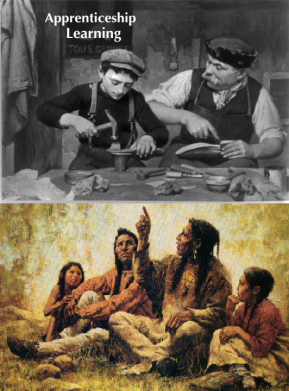 For tens of thousands of years our ancestors learned from their parents, aunts, uncles and members of the local community. Apprenticeship relationships and cooperative learning is how humans learn naturally, instructed by skilled elders, friends, parents, neighbors, artisans and peers.
For tens of thousands of years our ancestors learned from their parents, aunts, uncles and members of the local community. Apprenticeship relationships and cooperative learning is how humans learn naturally, instructed by skilled elders, friends, parents, neighbors, artisans and peers.
Teaching and learning has always been a part of human communities, usually through instruction by elders, one-to-one tutorship, apprenticeships, creative community activities and small group instructional situations.
Down through the ages every adult in a community was a teacher in some way. In 1996, Hillary Clinton wrote a book about this, “It Takes a Village: And Other Lessons Children Teach Us.” Unfortunately, most politicians nowadays are no longer advocating for approaches that empower neighborhood communities. The trend instead seems to be shifting learning responsibilities (and control) to computer programs and data-collection technologies developed by software companies (and financial investors) that have no human contact with the children these technologies will be influencing.
This is being called “personalised learning” but actually means that learners will be spending much more time plugged into technologies that will collect data and measure them, according to the standards of software developers. Perhaps it would help us all to think about how children naturally learn?
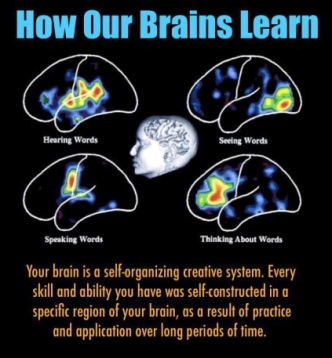 A child’s social environment is what supports their brain’s crucial role in skill development and learning. What modern research into neuroplasticity has shown is that children’s brains are wired for learning from birth, and that supportive experiences provided by parents and teachers must be aligned with these natural ways of learning, for a child’s development to proceed successfully. (See: Understanding How Our Brains Learn ).
A child’s social environment is what supports their brain’s crucial role in skill development and learning. What modern research into neuroplasticity has shown is that children’s brains are wired for learning from birth, and that supportive experiences provided by parents and teachers must be aligned with these natural ways of learning, for a child’s development to proceed successfully. (See: Understanding How Our Brains Learn ).
The current focus on “personalised” technologies (designed to measure and collect data) ignores the way children learn by interacting with diverse real world environments. Children learn things every day of their lives and in a wide variety of ways. What seems to have been forgotten is that education is not something that happens only in formal academic settings, and that the testing and measurement of all children is something that did not exist at any time before in human history.
Understanding how to continuously improve abilities and broaden knowledge (the process of lifelong learning) is far more important then getting the “correct” answers for artificial testing situations. Fortunately, innovative models of education that build on this understanding and support natural learning goals already exist:
The Escuela Nuevo (New Schools) model of democratic education, Waldorf Schools, Baltimore School for the Arts, Deborah Meier’s Mission Hill, James Comer’s School Development Program at Yale, Montessori schools, Circle of Courage (Native American model) and the Reggio Emilia approach developed in Italy all provide enriched learner-centered educational settings that are aligned with how children naturally learn.
Children grow and thrive when given the opportunity to collaborate with others, to participate in creative projects and to develop skills in meaningful ways. They need to practice activities (such as reading, drawing, sports, playing a musical instrument) in the real world, in order for their brains and bodies to develop useful skills. Learner-centered approaches such as those developed by Maria Montessori and Deborah Meier (see video below) value such hands-on community learning.
Schools don’t need to be punitive places, and there is no need for curriculums to be developed that focus primarily on data collection and textual information. That is just NOT how human beings learn! We learn by engaging the real world, connecting with fellow human beings and natural settings. The Silicon valley executives who send their children to this Waldorf elementary school (below) understand this. Yet it’s not the model their industry is selling the rest of the world.
 It’s industrial era madness to constantly test and measure children, to collect data from them, compare them to one another, to expect them all to learn the same things.
It’s industrial era madness to constantly test and measure children, to collect data from them, compare them to one another, to expect them all to learn the same things.
This mechanistic paradigm of learning was introduced at the beginning of the last century, a factory model of schooling designed to train future workers, to foster dependence, conformity and obedience, not creativity, self-direction, collaborative problem-solving, critical thinking or a love of learning.
This is not how children’s bodies, hearts and brains are designed to learn, which is why so many children (and adults) in modern societies have disliked school. That is not how the most creative human beings in history developed their talents, and its not how most of us developed the skills and abilities that are most meaningful to us.
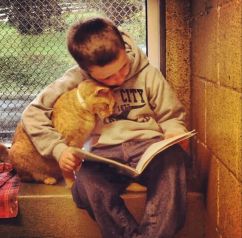 All of us learned things in school but it was during our free time outside of school where we practiced doing what we most enjoyed (alone and with others) that often mattered even more.
All of us learned things in school but it was during our free time outside of school where we practiced doing what we most enjoyed (alone and with others) that often mattered even more.
Whether reading books for pleasure, dancing, drawing, playing a musical instrument, tending a garden, raising animals, putting together a school musical or playing a sport with friends– it’s the practice time we put into activities we enjoyed that led to the highest levels of talent development and mastery.
We became most skilled at those things we put time into and loved to do.
We may have had great coaches and teachers as we grew up, but sometimes we didn’t. What matters as much as (or even more than) having “great” teachers is that children practice something, that they enjoy becoming skillful, that learning is self-directed, pleasurable and meaningful to them.
 On some level, we all know this, it’s common sense. It’s also what research in learning and child development has shown to be true.
On some level, we all know this, it’s common sense. It’s also what research in learning and child development has shown to be true.
We just need adults in positions of power and influence over education to “get this” and apply this understanding, working together with teachers and parents to build schools that are more aligned with how children naturally learn.
That’s always been one of the greatest challenges with the vast amount of human knowledge passed down over the centuries. Knowledge needs to be put into practice, applied successfully and creatively in the real world.
Knowing something for written examinations that shows your test scores are higher than others is meaningless if you don’t know how to apply that knowledge skillfully in the real world.
Most people feel this way, and yet we’ve been forced to participate in factory model education systems designed to rank and sort us, to determine our future economic “value” and social status.
Our challenge now, at the beginning of the 21st Century, is to dump this outmoded and mechanistic model of schooling. Our children don’t need to be forced to sit in front of computers for hours and hours, to collect data so that they can be measured and compared by people they will never meet.
Love and respect for young people needs to be the “common core” of the equation, not fixed standards put together to rank and sort learners into rigid categories, to decide who has passed and who has failed.
 As educator Ken Robinson has described, a Creative Grassroots Revolution in public education is already underway, but it needs to be acknowledged, supported, financed and nurtured. Children grow and learn successfully when they are cherished members of communities, where the adults who guide them also respect and care about them.
As educator Ken Robinson has described, a Creative Grassroots Revolution in public education is already underway, but it needs to be acknowledged, supported, financed and nurtured. Children grow and learn successfully when they are cherished members of communities, where the adults who guide them also respect and care about them.
There are no tests that can measure the future life potential of a child, when he or she is highly motivated, confident, encouraged to be creative, knows how to work well with others, enjoys mastering new skills and feels supported.
Factory and techno-centric models of schooling needs to be overthrown and tossed into the trash bin. It’s a dehumanising system that is out of synch with children’s natural ways of learning and ignores the essential role of local cultures and communities in education.
Rather then investing in technology that creates profits for investors and corporations, we need to provide a greater flow of resources into impoverished communities, to provide funding for successful innovative programs that already exist, to assert parental rights and local grassroots control, so that communities can decide democratically how to transform their neighborhood public schools.
When love, creativity and joy is at the core of learning, anything is possible. That’s what our ancestors knew and what all the research evidence tells us now. For as Aristotle put it, “Educating the mind without educating the heart is no education at all.”
~Christopher Chase
“If I were not a physicist, I would probably be a musician. I often think in music. I live my daydreams in music. I see my life in terms of music… I get most joy in life out of music.” ~ Albert Einstein
Related:
* Good Morning Mission Hill (video) * Self-Direction is the Key to Mastery * Every Child is An Artist by Nature * Schools for Democracy – Deborah Meier * Towards a More Creative & Holistic Model of Education * Symphonic Intelligence: The Next Revolution in Learning? * The Circle of Courage – Native American Model of Education * Real Learning is a Creative Process * Systems Thinking- Seeing How Everything is Connected * The Mastery Process: How Our Skills Grow * Neuroplasticity: How Learning Physically Changes the Brain * Educational Malpractice – The Child Manufacturing Process * How Wisdom Grows: Educating Hearts & Minds *

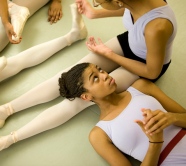
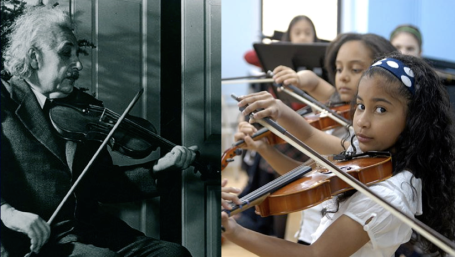
Top!!! Thank you for sharing your vision. Excelent review.
Raquel
Most welcome. We need this kind of cultural and historical re-membering.
Can you break this down into components? It’s such a wonderful, insightful post but I can’t grasp the whole of it.
I think visually, so I see it as a whole, and with metaphors… If you use your imagination to try and step back, it might be clearer? There is a natural way children learn. When education and teaching contexts are aligned with that they grow and develop happily. In fact, because their brains are so well designed for learning they often can and do learn on their own. But environments that disturb this natural learning process create problems, and suddenly learning shuts down. Skill development is sabotaged. That’s what has happened with the industrial factory school model that emphasizes performance, how you compare with other in an artificial test situation, rather than natural learning situations. Hope that helps?
Pingback: Systems Thinking: Seeing How Everything is Connected | Creative by Nature
Pingback: How Children Naturally Learn | Ed Tech-E Learni...
Pingback: Factory Model Education “Reforms” Were Designed for Product Testing, Not Children | Creative by Nature
Pingback: Opting Out of Factory Model Schooling, by Ira Shor | Creative by Nature
I agree with you 100% Christopher. And even though I work with adults, I’ll remind them again to look at how we all learned successfully back then – because the problems in adult learning stems from the way we learned at school. Learning more successfully once you are a grown up only works, if we remind ourselves how it actually did work when we were kids.
Thanks for the overview.
Oh I forgot something – one aspect that’s kind of missing in your post is, that the reason why children learn ALL THE TIME, is because a successful learning process is emotionally rewarded behaviour. In other words – learning – done the right way – is fun and we tend to want to do things more that feel good. I’ve developed a process for adults to get back to that place even BEFORE they start learning. And all of a sudden, learning is easy – even at age 50 🙂
Pingback: Aligning with Your Unique Human Potential | Creative by Nature
Pingback: How Children Naturally Learn | Looking to the Light
Pingback: How Children Naturally Learn | I Am A Human Being Too
Pingback: How children learn naturally – Public Schools need to pay attention
This is brilliant – such a well written drawing together of all the ways that education in the broadest sense can be offered. Bravo!
Thank you Hannah
Pingback: Copiii au capacitatea de a învăţa singuri! Cum îi putem ajuta să îşi îmbunătăţească acest atu? | Realitatea Damboviteana
Pingback: How Children Naturally Learn | thinkingaboutkids
Bravo.John Holt couldn’t have said it better.
Pingback: Edu-Tech’s Brave New World – How Education Software is Being Designed to Hijack Children’s Brains | Creative by Nature
Reblogged this on Tilly McDermott Atelierista.
Thank you!
Reblogged this on Gr8fullsoul.
Pingback: Bold Steps for Making Kids' Strengths Count - Our kids Are Not Broken
Pingback: The Future of Education: To Focus on AI or MI ? | Creative by Nature
Pingback: Natural Learning… การเรียนรู้โดยธรรมชาติ
Pingback: การเรียนรู้ตามธรรมชาติในเด็ก…
Pingback: Learn How to Have a School of You – Emotional Sobriety Means Healing Mind, Body, and Soul
Pingback: The Art of Learning – B I M Artiest